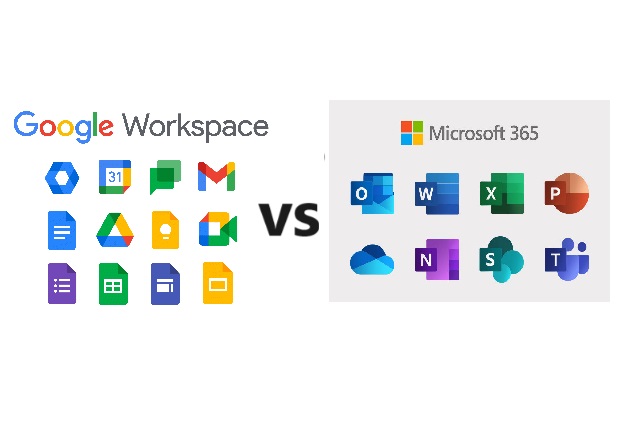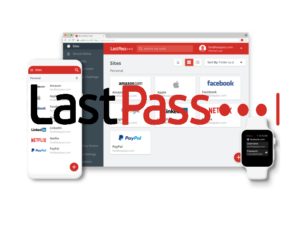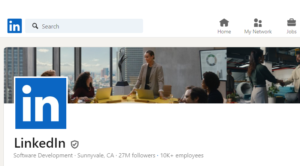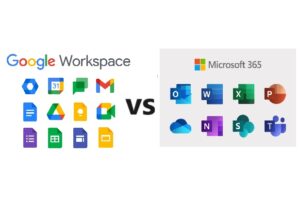Microsoft 365 vs. Google Workspace: Which One is Better for Your Needs?
Choosing between Microsoft 365 and Google Workspace (formerly G Suite) can be a pivotal decision for businesses and individual users alike. Both platforms offer robust productivity tools and have their unique strengths and weaknesses. This blog post will compare Microsoft 365 and Google Workspace to help you determine which suite is better suited for your specific needs.
1. Product Offerings
Microsoft 365:
- Microsoft 365 offers applications like Word, Excel, PowerPoint, Outlook, and OneNote. It also includes access to OneDrive for cloud storage and Teams for collaboration and communication.
- The suite is known for its comprehensive features in each application, which are preferred by users who require advanced functionality, particularly in spreadsheet and database management.
Google Workspace:
- Google Workspace provides a similar range of tools, including Google Docs, Sheets, Slides, Gmail, and Google Drive for storage. It also features Google Meet for video conferencing.
- Google’s offerings are web-first, making them highly accessible from any device with an internet connection. The interface is user-friendly, particularly for collaborative real-time editing.
2. Collaboration and Communication
Microsoft 365:
- Microsoft Teams is the centerpiece for communication, offering robust meeting, chat, and collaboration capabilities integrated with other Office apps.
- The platform is particularly strong in environments that require meticulous document control and extensive collaborative features within the Office suite.
Google Workspace:
- Google Workspace excels in real-time collaboration. Tools like Google Docs allow multiple users to edit documents simultaneously with changes reflected instantly.
- Its simplicity and speed make Google Workspace a favorite for teams that prioritize ease of use and quick setup.
3. Storage Options
Microsoft 365:
- Microsoft 365 provides substantial cloud storage with OneDrive, which is deeply integrated with Windows and Office applications.
- The storage solution is more versatile when it comes to integrating with third-party apps and offers more features for file recovery and data protection.
Google Workspace:
- Google Drive offers a seamless experience for storing files and sharing within and outside the organization. However, it is generally considered slightly less feature-rich in terms of integration with non-Google products.
4. Cost and Pricing Plans
Microsoft 365:
- Microsoft 365 offers various plans tailored to businesses, enterprises, and individual users. Pricing can be higher, but it is justified by the comprehensive set of tools and features provided.
- There is also greater flexibility in choosing plans that suit different organizational sizes and needs.
Google Workspace:
- Google Workspace also provides multiple pricing tiers but generally at a lower cost than Microsoft 365. The focus is more on streamlined functionality and ease of use.
- Smaller companies or those that need straightforward solutions may find Google Workspace more cost-effective.
5. Security and Compliance
Microsoft 365:
- Microsoft 365 is renowned for its robust security features and compliance standards, which are necessary for industries like finance and healthcare.
- It offers advanced security capabilities, including threat protection and information governance, that are critical for protecting sensitive data.
Google Workspace:
- Google Workspace offers strong security features as well, but its settings and options can be less granular than those of Microsoft 365.
- It still meets the standard security requirements for most businesses and includes easy-to-use tools to manage data security.
6. User Experience and Accessibility
Microsoft 365:
- Microsoft’s products are feature-rich and offer more customized options. However, this can sometimes result in a steeper learning curve for new users.
- Accessibility is excellent across multiple devices, with superior desktop clients for Windows and Mac.
Google Workspace:
- Google Workspace is known for its clean, user-friendly interface. It is particularly effective for less tech-savvy users or those who prefer a minimalistic approach.
- The platform is designed with mobile and web use in mind, providing consistent experience across devices.
Conclusion
The choice between Microsoft 365 and Google Workspace largely depends on your specific needs. If your organization requires advanced document and spreadsheet management, or if you are in a heavily regulated industry, Microsoft 365 might be the better choice. On the other hand, if you value simplicity, cost-effectiveness, and superior real-time collaboration, Google Workspace could be the way to go.
Consider your team’s needs, the type of work you do, and your budget to make the best choice between these two powerful productivity suites.









Post Comment